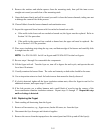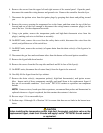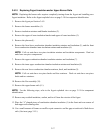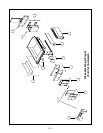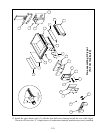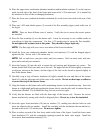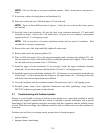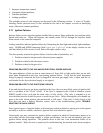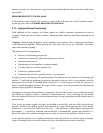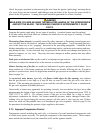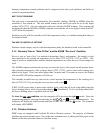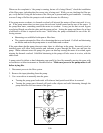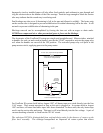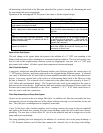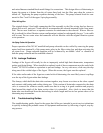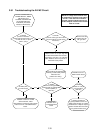3-23
operate correctly, but when the unit is again closed up and placed back into service the module heats
up and fails.
PROBLEMS RELATED TO THE GAS VALVE
If the problem is not in the 24VAC circuit, it is most likely in the gas valve itself, but before replac-
ing the gas valve refer to
TROUBLE SHOOTING THE GAS VALVE.
3.7.2 Improper Burner Functioning
With problems in this category, the burner ignites but exhibits abnormal characteristics such as
“popping,” dark spots on the burner ceramics, fluctuating flame intensity, and flames shooting out of
the flue.
“Popping” indicates delayed ignition. In this condition, the main gas valve is opening but the burner
is not immediately lighting. When ignition does take place, the excess gas “explodes” into flame,
rather than smoothly igniting.
The primary causes of popping are:
• Incorrect or fluctuating gas pressure
• A defective or incorrectly adjusted combustion air blower
• Inadequate make-up air
• Heat damage to the controller or ignition module
• A cracked ignitor or broken ignition wire
• A defective ignition module
• Cracked burner tile (this typically causes a very loud pop).
If popping occurs only during peak operating hours, the problem may be incorrect or fluctuating gas
pressure. Verify that the incoming gas pressure (pressure to the gas valve) is in accordance with the
appropriate CE or Non-CE Standard found in Section 2.3 of this manual, and that the pressure re-
mains constant throughout all hours of usage. Refer to page 2-6 for the procedure for checking the
pressure of gas supplied to the burner.
If popping is consistent during all hours of operation, the most likely cause is an insufficient air sup-
ply. Check for “negative pressure” conditions in the kitchen area. If air is flowing into the kitchen
area, this indicates that more air is being exhausted than is being replenished and the burners may be
starved for air.
If the fryer’s gas and air supplies are okay, the problem is most likely with one of the electrical com-
ponents. Examine the ignition module and controller for signs of melting/distortion and/or discol-
oration due to excessive heat build-up in the fryer. (This condition usually indicates improper flue
performance.) A melted or distorted ignition module is automatically suspect and should be re-
placed, but unless the condition causing excessive heat is corrected, the problem is likely to recur.
Verify that the ignition wire is tightly connected at both ends and free of obvious signs of damage.
Again, if damage is due to excessive heat in the fryer, that problem must also be corrected.



